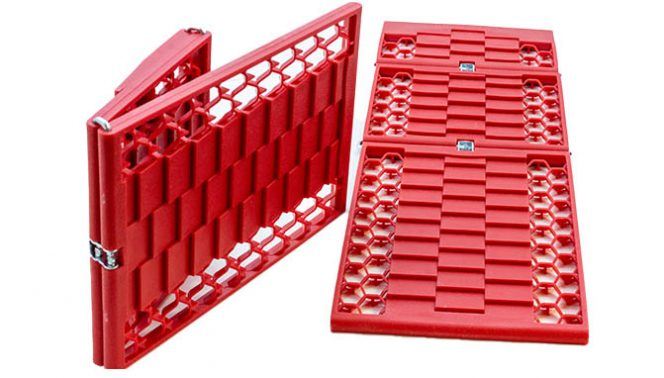The best products don’t always have to be the biggest and most expensive you can buy. This is why I wanted to give the DEDC traction mats a try in my off-road rig, to see if they were worthy of permanent placement in my box of off-road essentials.
In my search for the best self recovery products to outfit my Jeep with, I turned to our buyers guide of the best traction mats for suggestions. I gave the Bunker Industries traction boards a go, and was thoroughly impressed with their performance for the price. While they were light weight, they were anything but compact. I wanted to try a set of traction mats that took up minimal space, and according to reviews still performed well for people who have been stuck in loose terrain conditions. With over 1,000 people giving them a 4.5 out of 5 star average, I felt that the DEDC foldable traction mats were worthy of giving a shot. In the name of testing products, every item deserves a fair shot.
Table of contents
Small But Sturdy Construciton
Upon receiving the package, there was a very clear difference between the DEDC traction mats and the traction boards that I received days earlier. These things were small! The package was less than 4” thick, 8” wide, and less than 12” long, compared to the box that my traction boards came in, and stood up to my under arm when on end. These traction mats are definitely light and compact, but didn’t leave me with high expectations if I needed them to get my rig out of a soft situation.
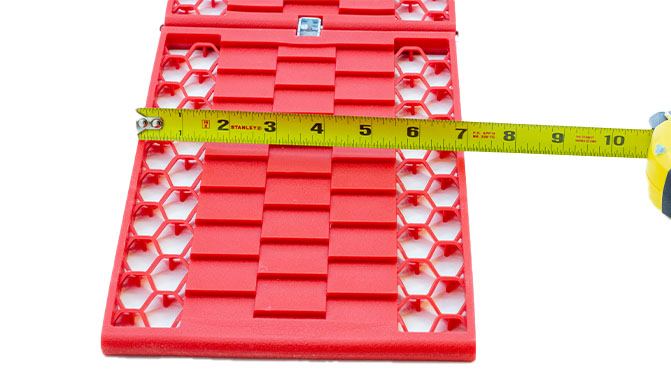
These foldable traction mats are sectioned in 3-pieces with the smallest being 4 ½” long, transitioning to a 6 ½” pad, and ending on an 11” long pad that is constructed from hard plastic that is a mere ½” thick. When you take into consideration that my tire size is 265/70 17, these traction mats are going to offer less of a footprint than the contact patch of my tire.
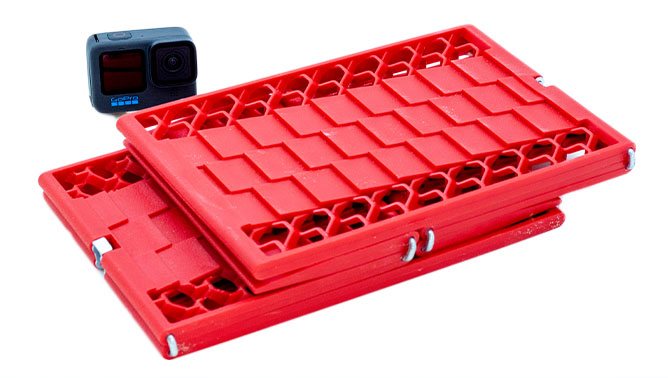
Putting Them To The Test
With no plans in the near future to head out to the desert, I ventured out to one of my favorite secret San Diego test locations where I’m able to drive along the bay and find some soft sand where people trying to launch their jet skis had torn up the beach. With my Kanati Mud Hog mud tires aired up to 45 psi, it wasn’t hard to get the rear end of my rig to start digging into the soft sand. While the photo gives the appearance of not being too far down in the sand, a quick glance at the axle would show that the differential wasn’t far from touching. This meant that the tires had dug deep enough to give these traction mats a fair shake.
I slightly dug under the front of the tires, allowing the leading edge of the traction mats to be directly under the tire once it dropped onto them at the start of spinning under throttle. To see just how these performed, I had positioned my GoPro HERO 10 to catch the action and analyze how they performed in the real world.
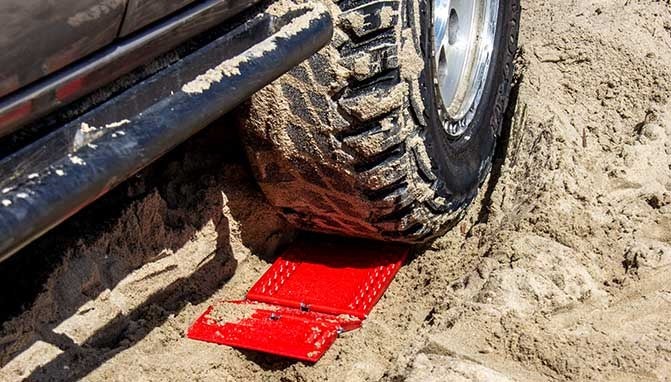
As I applied the throttle, you could see the rear tire drop down onto the DEDC traction mat and start forward movement. It didn’t take long for the large off-road tire to consume the first two panels as my rig rolled forward, but as soon as the tire was on the shortest, 4 1/2” portion of the foldable traction mat, you could see the tire spit it out the back and start sinking into the soft sand all over again. If the traction mats were longer or even one solid piece, I think they might have provided traction for a longer period of time to allow more momentum to get out of the soft patch of sand. The fact that it was so narrow compared to the tire didn’t help provide much more flotation for the tires either.
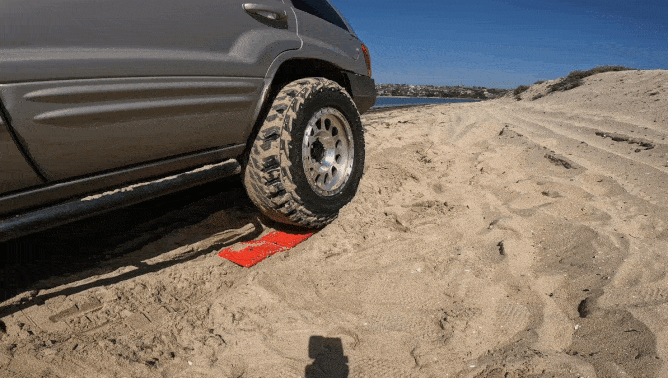
Final Thoughts
Because they didn’t necessarily perform well in the soft sand at the beach, doesn’t necessarily mean that they aren’t good in other conditions. Many of the positive reviews I read were from people who owned smaller SUVs and passenger cars, and used them in snowy/icy conditions. I can see where these have their place when used on firm ground when you only need a short burst of traction to get off of a slick surface. In that type of setting they’d be good for a smaller, narrower tire and even a larger off-road tire, but in soft unsupported terrain they just don’t offer the footprint you need in length or width to be effective.
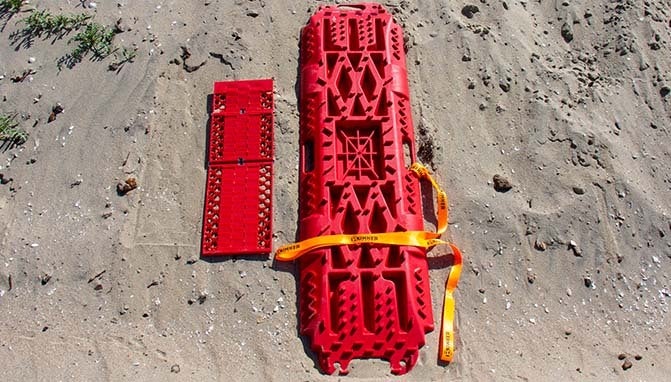
What is the best way to use traction mats/boards?
There’s no set way in using traction devices to get unstuck, but this method has worked for me when stuck in soft sand.
- Dig slightly under the tires you’re going to be placing the traction board/mat and also some of the area you’ll be driving onto. Try to compact the area, leaving a clear area to drive out on.
- Place the leading edge of the traction mat/board just under the front of the tire. This allows the tire to drop down onto the traction device and instantly grab traction, and start moving your vehicle forward.
- Steadily apply the throttle to minimize wheel as the vehicle moves forward. Keep the vehicle moving until you can stop on solid ground or until you start losing traction again to repeat the process until you’re on solid ground.
Your conclusion was that these aren’t great for soft conditions but might work better for people stuck in snow or on a patch of ice. Why?
The DEDC traction mats don’t provide a wide footprint to support themselves well in soft terrain. If you’re stuck on a patch of ice or snow, you just might need a small amount of tire bite to move the vehicle enough to get traction on the road. Using it in conditions like this, you’ll likely have a more firm piece of ground to support the mat.
Additional Resources
- Best Traction Mats for Getting Unstuck
- Best Winches And Why You Need One
- Best Tow And Recovery Straps
Become an Off-Road insider. Get the latest news first by subscribing to our newsletter here.
We are committed to finding, researching, and recommending the best products. We earn commissions from purchases you make using the retail links in our product reviews. Learn more about how this works.
